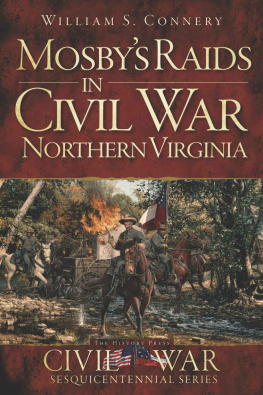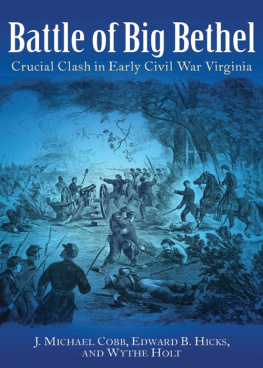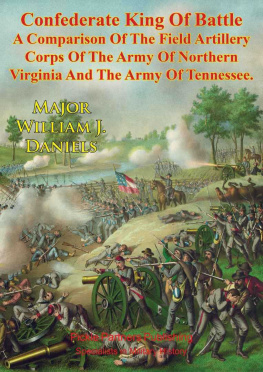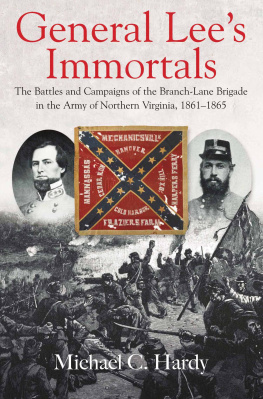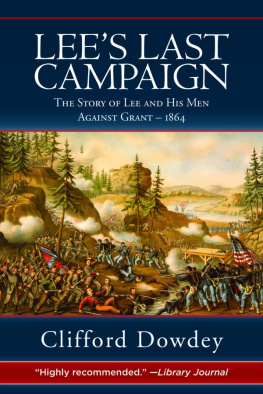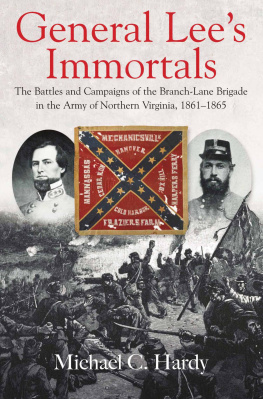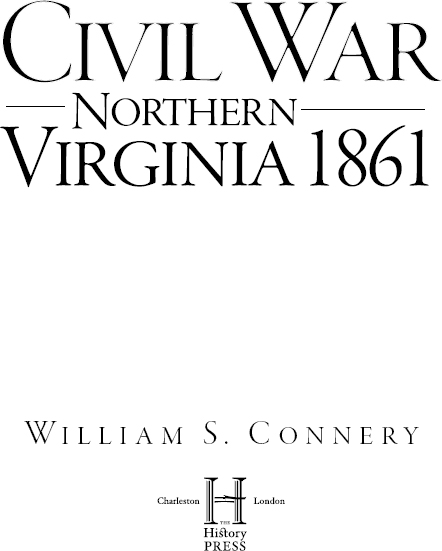
Published by The History Press
Charleston, SC 29403
www.historypress.net
Copyright 2011 by William S. Connery
All rights reserved
Images are from the authors collection unless otherwise noted.
Front cover: First Battle Flags, by Don Troiani.
First published 2011
e-book edition 2012
978.1.61423.333.6
Library of Congress Cataloging-in-Publication Data
Connery, William S.
Civil War Northern Virginia 1861 / William S. Connery.
p. cm.
Includes bibliographical references and index.
print edition ISBN 978-1-60949-352-3
1. Virginia--History--Civil War, 1861-1865--Campaigns. 2. Virginia, Northern--History, Military--19th century. 3. United States--History--Civil War, 1861-1865--Campaigns. I. Title.
E470.2.C716 2011
975.503--dc23
2011044585
Notice: The information in this book is true and complete to the best of our knowledge. It is offered without guarantee on the part of the author or The History Press. The author and The History Press disclaim all liability in connection with the use of this book.
All rights reserved. No part of this book may be reproduced or transmitted in any form whatsoever without prior written permission from the publisher except in the case of brief quotations embodied in critical articles and reviews.
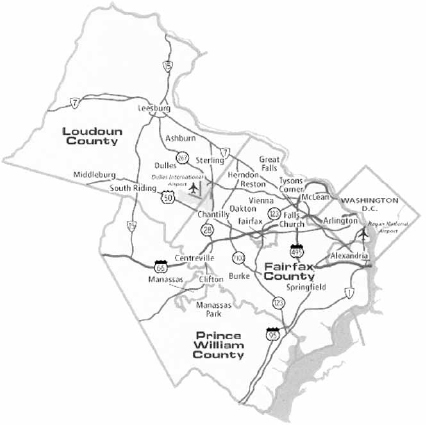
Modern map of Northern Virginia.
Oh thus be it ever,
When freemen shall stand,
Between their loved homes and the wars desolation.
Blest with victry and peace,
May the Heavn rescued land,
Praise the Power that hath made and preserved us a nation!
Then conquer we must,
When our cause it is just,
And this be our motto, In God Is Our Trust
Written by a Georgetown lawyer in Baltimore Harbor, 1814
Contents
Preface
Letter written for the 1911 Photographic History of the Civil War:
The White House
Washington
We have reached a point in this country when we can look back, not without love, not without intense pride, but without partisan passion, to the events of the Civil War. We have reached a point, I am glad to say, when the North can admire to the full the heroes of the South, and the South admire to the full the heroes of the North. There is a monument in Quebec that always commended itself to mea monument to commemorate the battle of the Plains of Abraham. On one face of that beautiful structure is the name of Montcalm, and on the opposite side the name of Wolfe. That always seemed to me to be the acme of what we ought to reach in this country; and I am glad to say that in my own alma mater, Yale, we have established an association for the purpose of erecting within her academic precincts a memorial not to the Northern Yale men who died, nor to the Southern Yale men who died; but to the Yale men who died in the Civil WarWilliam Howard Taft
The Yale Civil War Memorial was dedicated on June 20, 1915, and is located in the Memorial (Woolsey) Hall Rotunda at Yale University, at the intersection of Grove and College Streets in New Haven, Connecticut. The fact that the Yale Memorial commemorates the dead of both Union and Confederate forces is out of the ordinary and unique in Connecticut. President Tafts father, Alphonso Taft, was secretary of war and attorney general under President U.S. Grant.
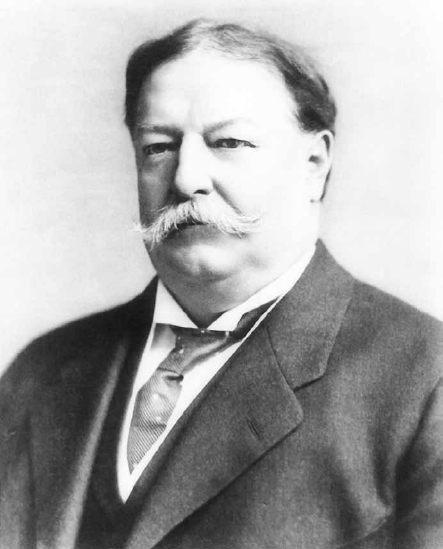
President William Howard Taft. He supported the Peace Festival in Manassas, Virginia, in 1911 to bring final healing to the nation. Courtesy of the Library of Congress.
Introduction
It is difficult to believe. Every weekday, drivers come into Washington, D.C., from all directions. Most from the south funnel into I-395, which takes the occupants to their jobs at the Pentagon and downtown D.C. to the alphabet soup of government agencies: DOA, DOE, FBI, DOI, DOS, etc. As the highway nears the Pentagon, it actually goes over the site of one of the forts established in 1861 to protect the Southern Gate to Washington. In some ways, the city has not changed much since the days of John Fitzgerald Kennedy, who called it a city of Northern charm and Southern efficiency.
My father was a World War II vet, having fought in New Guinea and the Philippines as part of the Sixth U.S. Army, Artillery. I came along late in the 1940s, part of the Baby Boom. I grew up close to Washington, in Baltimore, and my family would often take the drive over to D.C. Those were the days before the Air and Space Museum, when the Wright Brothers Flyer was hanging from the ceiling of the Smithsonian Castle. My first visit to the White House was in 1962, when our man (JFK) was president. Back in the day when being IrishCatholicDemocrat was all one word. I remember duck and cover; I was going to elementary school near Friendship (now BWIThurgood Marshall) Airport during the Cuban Missile Crisis of October 1962. We thought the world was ending then. I was just starting high school when JFK was assassinatedwe prayed for the repose of his soul, and I remember the silent bus trip from Baltimore to Glen Burnie to tell my family the news.
This same period (196165) was the time of the centennial of the Civil War. I traveled with my family up to Gettysburg, Antietam and Harpers Ferry. I still have a genuine, authentic Civil War bullet from the National Tower in Gettysburg. Even today, driving into Harpers Ferry is like going 150 years into the past. The last veterans of that conflict passed away in the 1950s. This was within my lifetime! I remember my high school history teacher, who was from Pennsylvania, in the mid-1960s telling the class that Robert E. Lee was a traitor. Most of us rebelled against that.
Ive been often asked about my interest in the Civil War. I speak to many groups in the D.C. area, and most have an ancestorsometimes two or two dozenwho was a proud Reb or Yank, or both. How about Bill Connery? Well, my mothers parents got off the boat in Baltimore from Krakow (the same part of Poland as Blessed John Paul II) in the 1890s and settled in Fells Point, where Marylands feisty Senator Barbara Mikulski hails from. My great-grandfather John Connery (yes, the same name as the Scottish actor Sir Seanhis ancestry is Irish, although he was born in Scotland, and he received his only Oscar for playing an Irish cop in The Untouchables) came from Waterford in Ireland and settled in Baltimore in the mid-1860s, first joining the U.S. Army, after the war, and then the Baltimore City Police Department. As far as I know, I have no dog in the fight of the War Between the States.
What I do have is the timing of my birthJanuary 19which I share with Confederate general in chief Robert E. Lee. It is also the birthday of Edgar Allan Poe, who happens to be buried in Baltimore. Being from Charm City, I try to keep neutral in our great internecine fight, although I am a Unionist at heart. Just dont call me a Yankee!
My desire in this book is to relate some of the known and lesser-known events that transpired in Northern Virginia in 1861 and the chaos and uncertainty of that time. The area is now one of the richest and highly populated areas in the United States. At the start of the Recent Unpleasantness in 1861, the area contained small villages like Fairfax Court House, Falls Church, Vienna, McLean, Brentsville and Leesburg. Alexandria was a metropolis of twelve thousand souls. Most of the area was farmland, which had been advertised in the Northern papers and journals. Thus, Pennsylvania Dutch, Quakers and hardy New Englanders had recently come to the area, attracted to the cheap land and proximity to the port of Alexandria and the nations capital, known at that time as Washington City. About the only thing in Arlington was the mansion and eleven-hundred-acre estate of Colonel and Mrs. Robert E. Lee. Arlington and Alexandria City were combined in Alexandria County, until the city split off in 1870 and the county changed its name to Arlington County in 1920.
Next page

